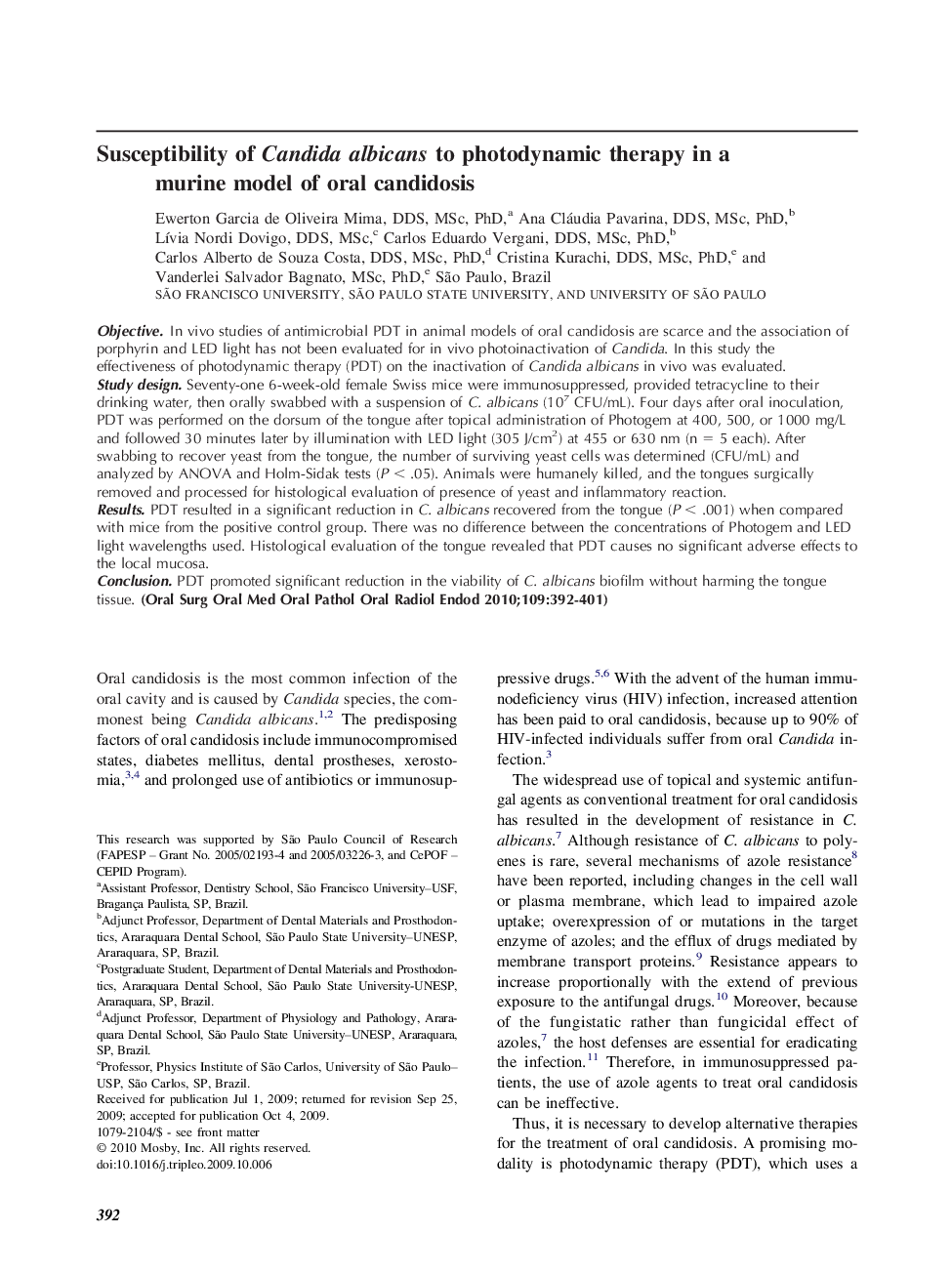| Article ID | Journal | Published Year | Pages | File Type |
|---|---|---|---|---|
| 3167683 | Oral Surgery, Oral Medicine, Oral Pathology, Oral Radiology, and Endodontology | 2010 | 10 Pages |
ObjectiveIn vivo studies of antimicrobial PDT in animal models of oral candidosis are scarce and the association of porphyrin and LED light has not been evaluated for in vivo photoinactivation of Candida. In this study the effectiveness of photodynamic therapy (PDT) on the inactivation of Candida albicans in vivo was evaluated.Study designSeventy-one 6-week-old female Swiss mice were immunosuppressed, provided tetracycline to their drinking water, then orally swabbed with a suspension of C. albicans (107 CFU/mL). Four days after oral inoculation, PDT was performed on the dorsum of the tongue after topical administration of Photogem at 400, 500, or 1000 mg/L and followed 30 minutes later by illumination with LED light (305 J/cm2) at 455 or 630 nm (n = 5 each). After swabbing to recover yeast from the tongue, the number of surviving yeast cells was determined (CFU/mL) and analyzed by ANOVA and Holm-Sidak tests (P < .05). Animals were humanely killed, and the tongues surgically removed and processed for histological evaluation of presence of yeast and inflammatory reaction.ResultsPDT resulted in a significant reduction in C. albicans recovered from the tongue (P < .001) when compared with mice from the positive control group. There was no difference between the concentrations of Photogem and LED light wavelengths used. Histological evaluation of the tongue revealed that PDT causes no significant adverse effects to the local mucosa.ConclusionPDT promoted significant reduction in the viability of C. albicans biofilm without harming the tongue tissue.
